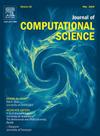Slope stability evaluation and prediction based on KTAN coupling model and Monte Carlo method
IF 3.7
3区 计算机科学
Q2 COMPUTER SCIENCE, INTERDISCIPLINARY APPLICATIONS
引用次数: 0
Abstract
Landslides pose significant challenges to slope stability evaluation due to their complex and unpredictable nature. This study introduces a novel machine learning model, KTAN (KAN-Transformer), to enhance slope stability prediction. By preprocessing slope stability classification data and landslide-influencing factors, we optimized five machine learning algorithms—Support Vector Machine (SVM), Random Forest (RF), eXtreme Gradient Boosting (XGBoost), Multiple Linear Regression (MLR), and KTAN—using Nested 10-Fold Cross-Validation (N10FCV) and Grid Search (GS). The models’ performance was assessed with metrics such as accuracy, F1-score, and AUC, and their uncertainty was evaluated via Monte Carlo simulation. Results demonstrate that KTAN outperforms the other models, achieving an accuracy of 0.94 and an F1-score of 0.95, offering a reliable and innovative approach to slope stability analysis.
基于KTAN耦合模型和蒙特卡罗方法的边坡稳定性评价与预测
滑坡的复杂性和不可预测性给边坡稳定性评价带来了重大挑战。本研究引入一种新的机器学习模型KTAN (KAN-Transformer)来增强边坡稳定性预测。通过对边坡稳定性分类数据和滑坡影响因素进行预处理,利用嵌套10-Fold交叉验证(N10FCV)和网格搜索(GS)对支持向量机(SVM)、随机森林(RF)、极端梯度增强(XGBoost)、多元线性回归(MLR)和ktan5种机器学习算法进行了优化。通过准确性、f1评分和AUC等指标评估模型的性能,并通过蒙特卡罗模拟评估模型的不确定性。结果表明,KTAN模型的精度为0.94,f1得分为0.95,优于其他模型,为边坡稳定性分析提供了一种可靠的创新方法。
本文章由计算机程序翻译,如有差异,请以英文原文为准。
求助全文
约1分钟内获得全文
求助全文
来源期刊

Journal of Computational Science
COMPUTER SCIENCE, INTERDISCIPLINARY APPLICATIONS-COMPUTER SCIENCE, THEORY & METHODS
CiteScore
5.50
自引率
3.00%
发文量
227
审稿时长
41 days
期刊介绍:
Computational Science is a rapidly growing multi- and interdisciplinary field that uses advanced computing and data analysis to understand and solve complex problems. It has reached a level of predictive capability that now firmly complements the traditional pillars of experimentation and theory.
The recent advances in experimental techniques such as detectors, on-line sensor networks and high-resolution imaging techniques, have opened up new windows into physical and biological processes at many levels of detail. The resulting data explosion allows for detailed data driven modeling and simulation.
This new discipline in science combines computational thinking, modern computational methods, devices and collateral technologies to address problems far beyond the scope of traditional numerical methods.
Computational science typically unifies three distinct elements:
• Modeling, Algorithms and Simulations (e.g. numerical and non-numerical, discrete and continuous);
• Software developed to solve science (e.g., biological, physical, and social), engineering, medicine, and humanities problems;
• Computer and information science that develops and optimizes the advanced system hardware, software, networking, and data management components (e.g. problem solving environments).
 求助内容:
求助内容: 应助结果提醒方式:
应助结果提醒方式:


